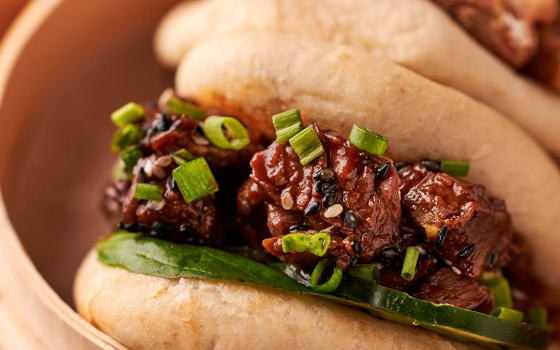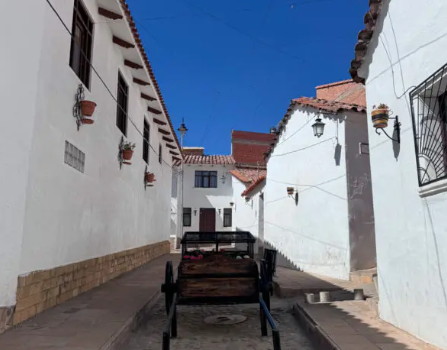
Living in Thailand has exposed me to a wide variety of local fruits, many of which are both strange and delicious. While I once lived in Bangkok and frequented the bustling markets, I now find myself immersed in the farming life of northeast Thailand, where every season brings a fresh wave of produce. Our area is home to an abundance of mango trees, and I’ve spent weeks gorging on ripe, sweet mangoes. But in this land of perpetual harvest, even the more familiar fruits come with a twist. Watermelons the size of your hand grow on the ground, and pineapples appear to spring directly from the earth. Let me share with you some of the more remarkable fruits I’ve encountered in this region.
1. Dragon Fruit (Gaew Mangkon, แก้วมังกร)
Dragon fruit, a staple in many parts of Thailand, first caught my attention during its season in the northeast. These unusual fruits seem to grow in the most unexpected places—from the ends of cactus-like vines draping over fences to the sides of telegraph poles. The vines often twist their way around anything they can find, making for an eerie, otherworldly sight. I discovered these strange fruits even hanging over ancient Khmer ruins at Phanom Rung, giving the place an almost surreal atmosphere. The fruit’s vibrant red skin is adorned with green, spiky scales, and inside, the flesh is white with tiny black seeds. The taste is subtle yet sweet, somewhat like a mix of plum and kiwi. There’s also a purple variety, which is nearly identical, except for the purple flesh inside. Locals call it “Gaew Mangkon,” or Dragon Crystal, which perfectly fits the fruit’s fantastical appearance.
2. Durian (Turian, ทุเรียน)
Durian is famously known as the “King of Fruits” in Southeast Asia, and for good reason. This fruit is as polarizing as it gets. Its appearance—spiky, massive, and alien—often frightens people away, but it’s the scent that makes it a love-it-or-hate-it experience. The aroma of durian has earned it a notorious reputation, and while some may find it unpleasant, others can’t get enough of it. The flesh, however, is a delightfully creamy, sweet treat. Durian is often paired with sticky rice or even enjoyed with champagne. It’s a seasonal luxury here, with vendors dedicated to selling it, and the excitement around it is palpable. I have to admit, I wasn’t a fan at first—my first experience with durian was less than pleasant. But after giving it a second try during this year’s season, I was blown away by how rich and sweet it tasted. Durian may not be for everyone, but for those who appreciate it, it’s a unique and indulgent experience.
3. Tamarind (Makam, มะขาม)
Tamarind might not be as visually striking as other fruits, but it’s incredibly versatile and used widely in Thai cuisine. Typically found in pod form, this fruit is more often used for its tangy flavor to enhance soups and salads like the famous som tam (papaya salad). It’s also commonly found in its dried form, a spice used in various dishes. But what I love most is eating it fresh. When unripened, tamarind has an intensely sour flavor, similar to the sour candies of my childhood. But once ripe, it transforms into a surprisingly sweet, candy-like treat. This fruit holds a special place in local culture, with many grannies crafting delicious tamarind candies that are far superior to anything you’d find at a store. These sweets are a must-try for anyone with a sweet tooth. And you can find them at rural 7-11s, but they never quite match up to the homemade versions.
4. Longkong (ลองกอง)
Longkong is another fruit that often gets confused with its cousin, the longan. In fact, the names are so similar that it can be confusing to tell them apart, but there’s a significant difference between the two. Longan, known as “lamyai” in Thailand, has a smooth, translucent white flesh surrounding a dark seed, much like lychee or rambutan. Longkong, on the other hand, has segmented white flesh that resembles garlic in shape, with several small seeds inside. The flavor of longkong is less sweet than lychee, offering a delightful tangy-sweet taste that’s both refreshing and addictive. It’s my personal favorite among Thailand’s fruits, even beating out the renowned mangosteen. Longkong season is currently in full swing, and I find myself snacking on them as I write. The fruit is delicious, but I warn you: the sticky sap can make your fingers stick together like glue. Known as langsat in some parts of the world, longkong is a fruit you won’t want to miss.
Conclusion
The fruit of Thailand is as diverse and captivating as the country itself. From the surreal, spiky dragon fruit to the creamy, polarizing durian, there’s no shortage of strange and wonderful options to explore. If you find yourself in Thailand, be sure to indulge in these unusual fruits that not only showcase the country’s agricultural diversity but also offer a glimpse into the fascinating world of Thai flavors.




















Comments